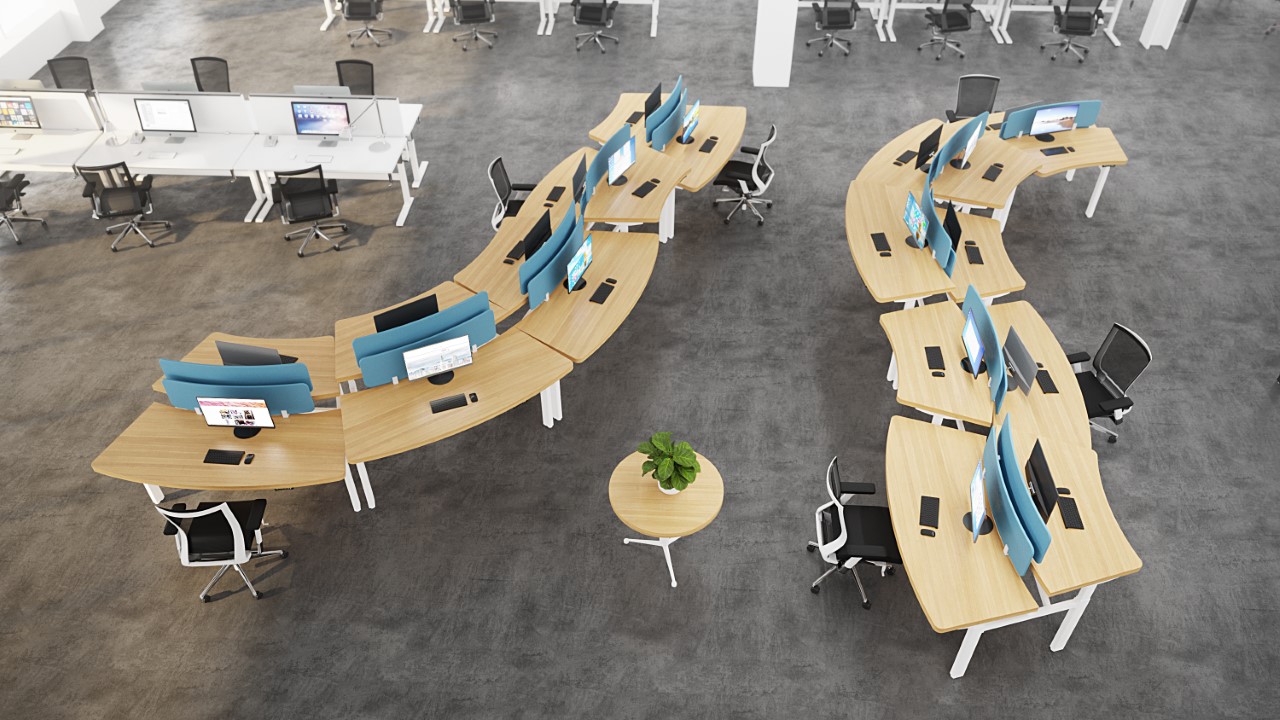Ergonomics is fundamentally the design of things for humans. It includes everything in your workplace, from the equipment to the positioning of resources. Comfort, efficiency, and safety are the focus of the design process. Ergonomics seeks to promote efficiency and productivity while decreasing pain.
The introduction of computers and fast-changing equipment in the modern workplace has substantially enhanced the requirement for ergonomics. Desks, chairs, monitors, keyboards, and lighting must all be considered while designing a workspace, whether in the office or at home.
Ergonomics considers the requirement for movement throughout the day. Office furniture has long favoured stiff, inflexible postures and limited movement. A balance between sitting and standing, which can be facilitated by a height-adjustable desk, is a proven approach to fighting the impacts of sedentary workplace behaviour.
Key Components of Ergonomics
Materials and resources are key factors of office ergonomics. These include your chair, desk, keyboard, and screen. All of which should be positioned to suit you. Additionally, the workplace layout focuses on the proximity and positioning of your resources towards you. The qualities of the chair, as well as the size and height of the desk, are all crucial. Furthermore, environmental factors include good lighting and availability to optimum temperature. Finally, working posture and behaviour play a major role in maintaining healthy ergonomics.
Importance of Office Ergonomics
The body of knowledge covering ergonomic risks in this area is still relatively small but it is rapidly growing. Not only does it improve employee well being and morale but it can save money by reducing costs related to workers compensation, absenteeism and staff turnover. Office ergonomics can help workers avoid injury, increase productivity, and improve work quality. This is because if you are uncomfortable and irritable at work, this is likely to impair your performance and cause harm.
Back and neck ache
These are the most frequent office worker complaints. A slumped posture is often the cause. This causes nerve constriction as the spine and other bones alter position as a result of the long-term impact of poor posture.
Muscle stiffness and joint pain
Sitting in a sedentary position for the majority of the day puts your joints at risk of discomfort and stiffness. This is especially common among workers who sit slouched or in an uncomfortable position.
Influence on breathing ability
Incorrect office posture might have a significant impact on your lung capacity. Slouching shortens the muscles and tendons in the front of your body. As a result, taking full, deep breaths becomes difficult.
Carpal tunnel syndrome
This is a condition that causes hand and arm pain, numbness, and tingling. Incorrect mouse and keyboard positioning frequently causes this.
What can your business do to maintain good office ergonomics?
1. Educate staff about the adjustments of their chair or workstations and the basics of ergonomics, so they understand how and why the equipment and chair works as it does.
2. Have someone who understands ergonomics prepare a workplace assessment.
3. Plan for the future by selecting workstations and office chair designs that suit the requirements of the office situation.
What to look for in a chair
- Correct seating posture is maintained over long periods
- Height adjustable seat and height adjustable arms
- Firm lumbar support on backrest that is height adjustable against the lower part of your back
- Free float or synchronised mechanisms where applicable
- Fire retardant fabric that is durable and that ‘breathes’
Read more about Gregory’s Ergonomic principles here.



